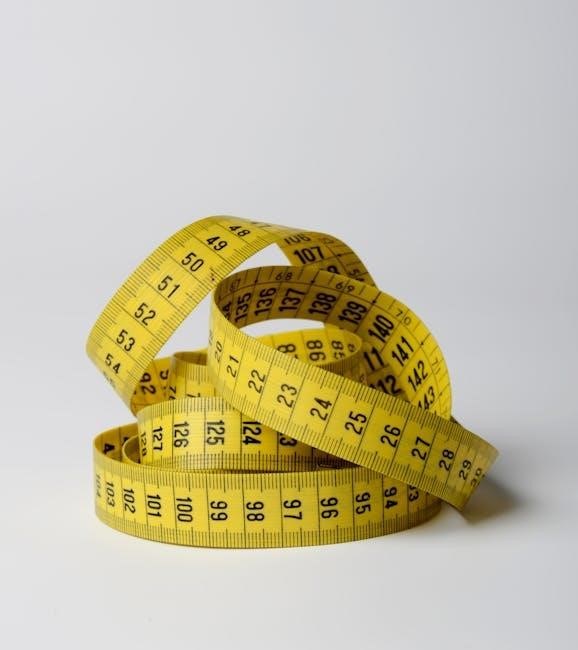The Denver Developmental Scale is a widely used screening tool for assessing developmental milestones in children from birth to 6 years. It evaluates cognitive, motor, language, and social skills, providing early detection of potential delays. The Denver II, its updated version, offers a comprehensive framework for identifying developmental challenges, enabling timely interventions. This scale is valued for its non-invasive, child-friendly approach and ease of use in clinical and educational settings. Regular updates and cultural adaptations ensure its relevance and effectiveness in diverse populations worldwide.
1.1 Overview of the Denver Developmental Screening Test (DDST)
The Denver Developmental Screening Test (DDST) is a comprehensive tool for assessing developmental milestones in children from birth to six years. It evaluates personal-social, fine motor, language, and gross motor skills, providing insights into a child’s developmental progress. The test is designed to identify potential delays early, enabling timely interventions. Available as the Denver II, it includes detailed guidelines and age-specific norms, making it a valuable resource for professionals. PDF versions and supplementary materials, such as questionnaires, facilitate easy administration and interpretation.
1.2 Importance of Developmental Screening in Early Childhood
Early developmental screening is crucial for identifying delays and ensuring timely interventions. The Denver II helps monitor developmental progress, enabling professionals to detect issues early. This screening is vital for promoting healthy development, as it allows for tailored support and resources. By assessing milestones, it aids in addressing potential challenges promptly, ensuring children reach their full potential. Regular screening fosters early identification and intervention, which are critical during the formative years of a child’s growth and development.
History and Development of the Denver Scale
The Denver Developmental Scale, known as the Denver II, was introduced in the 1990s. It evolved from the original Denver Developmental Screening Test (DDST), created in the 1960s by William K. Frankenburg. Key contributors refined the scale to improve accuracy and cultural sensitivity, establishing it as a cornerstone in developmental assessment.
2.1 Origins and Evolution of the Denver Developmental Screening Test
The Denver Developmental Screening Test (DDST), later refined as the Denver II, originated in the 1960s. Created by William K. Frankenburg, it aimed to identify developmental delays in children. The test evolved over decades, with the Denver II introduced in the 1990s, incorporating updated norms, new test items, and improved cultural sensitivity. This evolution ensured the scale remained a reliable tool for early childhood assessment, addressing diverse developmental needs across different populations.
2.2 Key Contributors to the Denver II
William K. Frankenburg, a prominent pediatrician, was the primary developer of the Denver II. His work built on earlier versions, refining the test to enhance accuracy and applicability. Other contributors, including researchers and clinicians, played roles in updating norms, improving cultural sensitivity, and expanding test items. Their collaborative efforts ensured the Denver II became a reliable and widely-used tool for early childhood developmental screening, addressing diverse populations and clinical needs effectively.

Structure of the Denver Developmental Scale
The Denver Developmental Scale is organized into four domains: Personal-Social, Fine Motor, Language, and Gross Motor. Each domain assesses specific skills, providing a comprehensive evaluation of a child’s developmental progress. The scale includes age-specific test items, allowing for accurate tracking of milestones from infancy through early childhood. This structured approach ensures a holistic understanding of a child’s abilities and identifies areas needing support.
3.1 Domains Assessed: Personal-Social, Fine Motor, Language, and Gross Motor
The Denver Developmental Scale evaluates four key domains: Personal-Social, Fine Motor, Language, and Gross Motor. Personal-Social assesses interaction and self-awareness skills. Fine Motor measures small muscle movements, like drawing or using utensils. Language evaluates verbal and non-verbal communication. Gross Motor focuses on large muscle movements, such as walking or jumping. Each domain includes age-specific test items, ensuring a comprehensive assessment of developmental milestones and identifying delays or strengths in these critical areas of child development.
3.2 Age Ranges and Test Items
The Denver Developmental Scale assesses children from birth to 6 years, divided into specific age ranges. Each range includes test items tailored to developmental expectations. For example, at 1 month, lifting the head while prone is assessed, while at 12 months, pointing to body parts is evaluated. By 4 years, tasks involve drawing a person with six parts. These age-appropriate items help identify delays and strengths, ensuring timely interventions for optimal child development across all domains. The scale’s structured approach ensures accuracy and reliability in assessing developmental progress.

Purpose and Applications of the Denver Scale
The Denver Scale screens for developmental delays and behavioral issues in children, aiding early identification and intervention. It is widely used in clinical and educational settings.
4.1 Identifying Developmental Delays in Children
The Denver Scale effectively identifies developmental delays by assessing milestones across four domains: personal-social, fine motor, language, and gross motor skills. It provides clear criteria to detect if a child’s progress is below expected levels, signaling the need for further evaluation or intervention. Early detection through this tool is crucial for timely support and improved outcomes for children with potential developmental challenges.
4.2 Use in Clinical and Educational Settings
The Denver Scale is widely utilized in clinical and educational settings to assess developmental progress. Healthcare providers use it to identify delays during routine check-ups, while educators employ it to plan interventions. Its simplicity and structured format make it accessible for professionals in both fields, facilitating early identification of children needing support. This tool bridges clinical and educational environments, ensuring consistent monitoring and tailored interventions for optimal child development outcomes.

Administration and Scoring
The Denver Scale involves a step-by-step process using standardized test forms and materials. Scoring is based on specific criteria, ensuring consistent and accurate results for each child.
5.1 Step-by-Step Process for Administering the Test
Administration of the Denver Scale involves preparing materials like dolls, cubes, and pictures. The examiner engages the child, demonstrating tasks such as identifying body parts or drawing. Each item is scored based on the child’s ability to perform the task. The process is standardized, ensuring consistency across administrations. The test is designed to be engaging, keeping the child’s attention while assessing developmental milestones effectively.
5.2 Scoring Criteria and Interpretation Guidelines
Scoring involves comparing the child’s performance to established norms, calculating percentiles, and determining developmental age. Each item is scored as “pass,” “fail,” or “no opportunity.” Results are interpreted based on age-specific criteria, with guidelines for identifying delays. A score below the 25th percentile may indicate a need for further evaluation. Clear interpretation guidelines help professionals determine if developmental concerns exist and if referrals for comprehensive assessments are necessary.

Interpretation of Results
Results are interpreted using percentiles and developmental age, identifying delays or typical development. Scores guide referrals for further evaluation, ensuring timely interventions for children at risk.
6.1 Understanding Percentiles and Developmental Age
The Denver Scale uses percentiles to compare a child’s performance to peers, while developmental age reflects mastery of expected milestones. Percentiles indicate whether a child is developing typically or if delays are present. Scores below the 10th percentile may signal the need for further evaluation. This dual approach helps professionals assess developmental progress and identify areas requiring intervention, ensuring timely support for children at risk of developmental delays.
6.2 Referral Criteria for Further Evaluation
The Denver Scale provides clear referral criteria for children scoring below the 10th percentile or showing significant delays in developmental milestones. If a child’s results fall into the “unsatisfactory” or “questionable” ranges, further evaluation is recommended. Referral is also advised if there are concerns about developmental progress, such as difficulty sitting up by 12 months or speaking by 24 months. Early referral ensures timely interventions and support for children with potential developmental challenges.

Strengths of the Denver Developmental Scale
The Denver Scale is non-invasive, child-friendly, and easy to administer, making it a practical tool for healthcare providers. Its clear structure ensures accurate and reliable results.
7.1 Non-Invasive and Child-Friendly Approach
The Denver Developmental Scale employs a gentle, play-based method that makes children feel comfortable, reducing anxiety. This approach ensures accurate results by engaging the child naturally. Activities like drawing, naming objects, and simple motor tasks are used, creating a stress-free environment. This method is particularly effective in young children, allowing for a more authentic assessment of their developmental abilities without causing discomfort or resistance.
7.2 Ease of Use for Healthcare Providers
The Denver Developmental Scale is designed for simplicity, making it accessible to healthcare providers. The test materials, including PDF forms, are easy to download and use. Clear instructions guide administrators through each step, ensuring consistency. Structured test forms simplify the evaluation process, while scoring guidelines provide straightforward interpretation. These features enable healthcare providers to administer and interpret the test efficiently, even with limited specialized training, ensuring accurate and reliable results.
Limitations and Criticisms
The Denver Scale faces criticism for cultural and socioeconomic biases, as it may not account for diverse backgrounds. Its reliability in non-English-speaking populations has also been questioned.
8.1 Cultural and Socioeconomic Bias Concerns
The Denver Scale has faced concerns regarding cultural and socioeconomic biases, as its norms were primarily established for Western, middle-class populations. This may lead to inaccurate assessments of children from diverse backgrounds, potentially misidentifying developmental delays. While efforts have been made to adapt the scale for different cultures, challenges persist in ensuring equitable and culturally sensitive screening across all populations. These biases highlight the need for ongoing refinement and broader validation studies.
8.2 Reliability and Validity in Diverse Populations
While the Denver Scale demonstrates strong reliability and validity in many populations, questions remain about its applicability in culturally and socioeconomically diverse groups. Studies suggest that cultural adaptations are necessary to ensure accurate assessments, as the original norms may not fully capture developmental patterns in non-Western or low-income settings. Efforts to translate and validate the scale for global use are ongoing, aiming to enhance its utility and fairness across varied demographics.

Cultural and Linguistic Adaptations
The Denver Scale has undergone cultural and linguistic adaptations to ensure applicability across diverse populations. Translations into multiple languages and adjustments for cultural sensitivity have been implemented to reflect local norms and practices, enhancing its accessibility and relevance worldwide.
9.1 Adaptations for Use in Different Countries
The Denver Developmental Scale has been adapted for use in various countries to accommodate cultural and linguistic differences. For instance, a Korean version was developed to assess developmental milestones in Korean children. These adaptations ensure that the scale remains culturally sensitive and relevant, allowing healthcare providers to accurately screen children from diverse backgrounds. Such efforts enhance the tool’s global applicability and effectiveness in early developmental screening.
9.2 Ensuring Cultural Sensitivity in Screening
The Denver Developmental Scale incorporates cultural sensitivity to ensure accurate and fair assessments across diverse populations. Translations and adaptations are tailored to reflect local norms, behaviors, and language patterns. For example, the Korean version adjusts milestones to align with cultural expectations. These efforts ensure the scale remains effective and equitable, allowing healthcare providers to assess developmental progress without cultural bias, thus improving early identification of delays worldwide.
Developmental Milestones
The Denver Scale tracks developmental milestones from birth to 6 years, covering gross motor, fine motor, language, and personal-social skills. It outlines typical achievements at specific ages, helping identify delays and ensuring timely interventions for healthy development.
10.1 Gross Motor Skills Milestones
Gross motor skills milestones in the Denver Scale include activities like sitting, crawling, standing, and walking. Infants typically lift their heads while prone at 1 month and sit unassisted by 6 months. By 12 months, most children walk independently. These milestones reflect physical growth and coordination, essential for overall development. Monitoring these achievements helps identify potential delays and ensures appropriate interventions for motor skill development.
10.2 Fine Motor Skills Milestones
Fine motor skills milestones in the Denver Scale involve tasks requiring hand and finger coordination. Infants begin by bringing hands to midline at 1-2 months, progressing to transferring toys between hands by 5-6 months. By 9-10 months, children demonstrate a raking grasp, and at 12 months, they use a neat pincer grasp. These skills are foundational for activities like drawing and dressing, with milestones such as drawing simple shapes by 3 years and copying lines by 4 years. Early detection of delays in fine motor development allows for timely intervention, supporting overall developmental progress.
10.3 Language and Communication Milestones
Language and communication milestones in the Denver Scale track progress from cooing at 2 months to complex sentences by 5 years. By 6 months, infants babble; at 9 months, they say a few words. Toddlers combine words into short sentences by 2 years and use simple sentences by 3 years. At 4 years, they describe events, and by 5 years, they form complex sentences. These milestones help identify delays, ensuring early intervention for language development challenges.
10.4 Personal-Social Development Milestones
Personal-social milestones in the Denver Scale assess social-emotional growth. Infants show interest in faces by 2 months and smile by 4 months. By 6 months, they imitate sounds, and at 12 months, they wave goodbye. Toddlers assert independence by 18 months, show affection by 2 years, and cooperate with others by 3 years. Preschoolers demonstrate empathy and share toys by 4 years. These milestones help identify social-emotional delays, guiding early support for healthy development.

Behavioral and Developmental Assessments
The Denver Scale evaluates behavioral patterns in children aged 0-5 years, focusing on social-emotional and adaptive behaviors. It links behavioral observations to developmental progress, aiding early identification of delays.
11.1 Assessing Behavioral Patterns in Young Children
The Denver Scale assesses behavioral patterns in children aged 0-5 years, focusing on social-emotional and adaptive behaviors. It evaluates how children interact, play, and respond to their environment. The test identifies typical and atypical behaviors, providing insights into developmental progress. By observing these patterns, professionals can detect early signs of delays or challenges, enabling timely interventions. This assessment is crucial for understanding a child’s overall development and addressing potential issues early.
11.2 Linking Behavior to Developmental Progress
The Denver Developmental Scale links behavioral patterns to developmental progress by assessing how children interact and respond to their environment. It evaluates milestones in domains like personal-social skills, helping to identify typical and atypical behaviors. By connecting these observations to developmental expectations, professionals can detect early signs of delays and recommend targeted interventions, ensuring children receive the support needed for healthy growth and development.
The Denver Prescreening Developmental Questionnaire
The Denver Prescreening Developmental Questionnaire is a pre-screening tool for parents to assess their child’s developmental milestones in two age ranges: 0-9 months and 9-24 months;
12.1 Purpose and Structure of the Questionnaire
The Denver Prescreening Developmental Questionnaire (DPDQ) is designed for parents to report on their child’s developmental milestones. It includes structured questions about gross motor, fine motor, language, and personal-social skills. The questionnaire is divided into two age-specific forms: 0-9 months and 9-24 months. Each form contains items that align with typical developmental expectations, allowing parents to identify potential delays early. This tool complements the Denver II by providing a preliminary assessment before administering the full screening test.
12.2 Ages 0-9 Months and 9-24 Months Questionnaires
The Denver Prescreening Developmental Questionnaires are tailored for two age ranges: 0-9 months and 9-24 months. The 0-9 month form focuses on early milestones like head control, reaching, and vocalization. The 9-24 month form assesses more advanced skills, such as walking, gesturing, and simple language. Both questionnaires are designed for parents to report their child’s abilities, helping identify potential delays in developmental areas like gross motor, fine motor, and language skills. They serve as early detection tools for further evaluation if needed.

Materials and Resources
The Denver Developmental Scale includes test forms, scoring guidelines, and supplementary materials for administrators. Resources like the test manual, scoring templates, and interpretation guides are available for download. Additionally, contact information for materials distribution, such as P.O. Box 371075, Denver, Colorado, and phone numbers like 1-800-419-4729, are provided for ordering physical copies or accessing digital versions.
13.1 Test Forms and Scoring Guidelines
The Denver Developmental Scale provides detailed test forms and scoring guidelines to ensure accurate assessment. The test forms are available as downloadable PDFs, offering structured questions and items for each developmental domain. Scoring guidelines include percentile rankings, with cutoffs at the 50th and 75th percentiles to identify delays. Instructions for scoring, such as counting paired items (e.g., arms, legs) as one, are clearly outlined. Examples of test items, like placing a cube in a cup, are included for clarity. These materials are accessible via the Denver II website or through DDM, Inc. resources.
13.2 Supplementary Materials for Administrators
Supplementary materials for administrators include detailed scoring guidelines, test forms, and instructional resources. These materials, available as downloadable PDFs, provide step-by-step instructions for test administration and interpretation. Additional resources, such as cultural adaptation guides and developmental milestone charts, support administrators in ensuring accurate and culturally sensitive screening. Practical examples, like demonstrating how to assess fine motor skills, are also included to enhance understanding and effective use of the Denver Scale in diverse settings.
Case Studies and Practical Examples
Case studies and examples illustrate typical and atypical developmental patterns, helping professionals interpret screening results and apply the Denver Scale effectively in real-world scenarios.
14.1 Examples of Typical and Atypical Development
Typical development includes milestones like sitting up by 6 months or speaking by 18 months. Atypical examples, such as a toddler not pointing by 12 months, may indicate delays requiring further evaluation. These examples guide professionals in identifying patterns and determining the need for interventions based on Denver Scale assessments.
14.2 Real-World Applications of the Denver Scale
The Denver Scale is widely applied in pediatrics, preschools, and early intervention programs to monitor developmental progress. Clinicians use it to identify delays and guide tailored support. Educators incorporate its insights to adapt teaching strategies. Parents benefit from understanding their child’s milestones, fostering early intervention. Its practicality ensures effective use in diverse settings, making it a cornerstone in promoting healthy child development and addressing challenges promptly. This tool bridges clinical and educational needs seamlessly.

Future Directions and Updates
Future updates to the Denver Scale aim to enhance cultural sensitivity and integrate technology for improved screening. Plans include revising the Denver II to better reflect diverse populations and incorporate digital tools for streamlined assessments. These advancements will ensure the scale remains a reliable and accessible resource for early childhood development monitoring.
15.1 Plans for Revising the Denver II
Plans for revising the Denver II include updating norms to reflect diverse populations and incorporating feedback from global users. Efforts focus on enhancing cultural sensitivity and ensuring items are relevant across different socio-economic backgrounds. Additionally, integrating digital tools for administration and scoring is a priority, aiming to improve accessibility and accuracy. These revisions will maintain the scale’s reliability while addressing contemporary needs in early childhood assessment.
15.2 Integrating Technology for Enhanced Screening
Integrating technology into the Denver II aims to enhance screening efficiency and accessibility. Digital platforms will enable online administration, automated scoring, and instant results interpretation. This innovation will reduce administrative burden and improve accuracy; Additionally, technology will facilitate remote screenings, benefiting families with limited access to in-person assessments. These advancements promise to modernize the screening process while maintaining the scale’s reliability and effectiveness in identifying developmental milestones and delays.
The Denver Developmental Scale effectively identifies developmental milestones, enabling early intervention. Its widespread use underscores the importance of early screening in enhancing child development outcomes universally.
16.1 Summary of the Denver Developmental Scale’s Role in Child Development
The Denver Developmental Scale is a pivotal tool for assessing developmental milestones in children, aiding early detection of delays and promoting timely interventions. It evaluates key domains such as gross motor, fine motor, language, and personal-social skills, providing insights into a child’s developmental progress. Widely used in clinical and educational settings, the scale’s adaptability and cultural sensitivity ensure its effectiveness across diverse populations, making it an essential resource for fostering healthy child development worldwide.
16.2 Final Thoughts on the Importance of Early Screening
Early screening is crucial for identifying developmental delays, enabling timely interventions that improve long-term outcomes. Tools like the Denver II provide insights into milestones, allowing personalized support. Cultural adaptability ensures its effectiveness worldwide, making it a vital resource for healthy child development. By facilitating early detection, the Denver Scale plays a key role in enhancing developmental trajectories and fostering resilience in children.